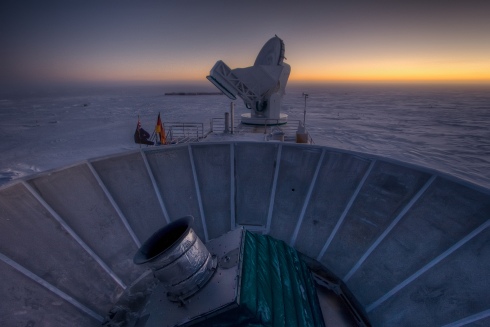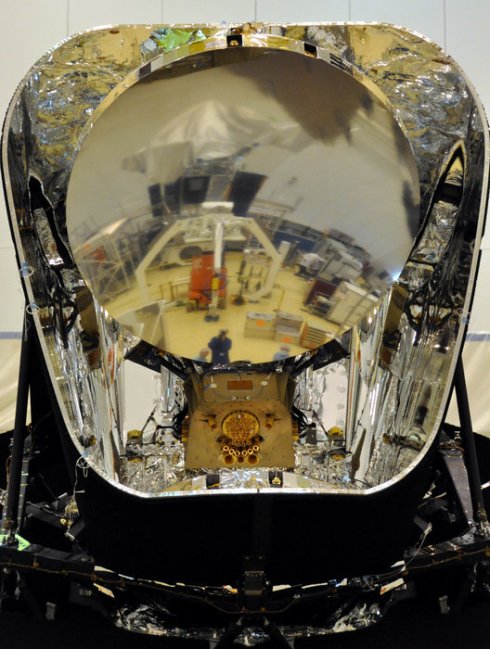Recently, an article in the Columbia Journalism Review about “I F*cking Love Science” (IFLS) founder Elise Andrew (@Elise_Andrew) stirred up some controversies (see postscript). In the article by Alexis Sobel Fitts (), Andrew was praised for being one of “journalism’s self-made digital-era brands.”
If she isn’t already, Andrew is poised to be a new type of media superstar.
I will admit that I am not a fan of IFLS. I started out as one though – I enjoyed the quick wits by Elise Andrew and by the page’s followers, the interesting bite-size science, and some incredible photos as well as funny comics portraying the lives of scientists. I was also very impressed by how fast the number of followers increased. Despite some criticism about people loving pretty pictures and not actually science, I do think that science could start out from an inspiration – a photo, a quote, a story. And, for once, science get to ride to social media wave to reach a larger crowd.
The love faded very quickly though. More than once when I thought about sharing the images, I noticed that some of the images don’t have their sources listed. As a blogger, this is not the standard that I would have allowed on my own blog. I thought that perhaps I was just being too cautious myself, but later on this was rightly pointed out by a few fellow science artists; Alex Wild in particular wrote on his blog, “Facebook’s “I F*cking Love Science” does not f*cking love artists.” The attention caught on, some images were then credited (although this is far from the end of the story – see here and here).
With the strong number of followers, IFLS started a website; writers were recruited, and they began curating articles for the site and for sharing on the Facebook page. Although, occasionally, the titles of some articles would hit a (bad) nerve for me, like:
But, what frustrates me more about IFLS is probably the following – its handling of the vaccination topic.
(Full disclaimer: I get my flu vaccine every year, I was vaccinated per schedule thanks to my parents, and when I travel to a foreign country I make sure to get the appropriate vaccines. If I have kids in the future, they WILL be vaccinated. So you know my stance. And this is what I think of Jenny McCarthy)
There is no denial that vaccination is a tricky topic – one of those that can backfire very easily if thoughts are not put into its communication. In 2012, a study by Cornelia Betsch and Katharina Sachse showed that telling parents “there is no risk” instead of “there are some risks” actually works against parents’ intent to vaccinate their children. Another study published earlier this year (original scientific article here is paywalled, but you can find the pre-print here) by political scientist Brendan Nyhan of Dartmouth College with colleagues showed that the common tactics used by US CDC (and also in many discussions about the importance of vaccination) – including providing information about the lack of evidence connecting MMR and autism, explaining the risks involved in not vaccinating one’s children, showing an image of a very sick child, or supplying a dramatic narrative – actually are rather useless in convincing parents to vaccinate their children. What’s more, some of these interventions backfired.
Likewise, while Disease images did not have a significant effect on MMR side effects, it did increase beliefs that vaccines cause autism (AOR=1.47, 95% CI: 1.02 to 2.13), though the effect was not distinct from the other risk interventions (F(2, 1734) = 0.96, n.s.).
–
In addition, our results demonstrate the importance of measuring beliefs and behavioral intent when assessing health interventions. Corrective information about the disproven vaccine-autism link significantly reduced misperceptions, but also reduced intention to vaccinate among parents with the least favorable vaccine attitudes. If we had not measured intent, we might have missed a potentially dangerous backfire effect.
(By the way, this article in Journalist’s Resources covers the study very well, with additional readings as to why this is happening)
Most news coverage painted a rather gloomy and negative picture (here, here, and here), although I would really like to think that it simply means we need to find other ways to communicate the issue – such as the one suggested by Alyssa Rosenberg at Washington Post, “How can we convince parents to vaccinate? Acknowledge their fears” (which is supported by this small qualitative study). Or maybe we should enforce the message with positive imagery as suggested by Glendon Mellow (). And, there are some preliminary results suggesting that a different way of framing the issue might actually be helpful. Anyways, there are many interesting questions here, and I hope to see a major study in the future.
Now, back to IFLS.
Everytime it comes to the topic of vaccination, it comes out as a sarcastic talk down to the so-called anti-vaxxers (btw a term that I don’t like – you can ask me why in the comments). While I agree that it is frustrating to have heard from some of those who are against vaccinating their children, in the end some are actually parents who are concerned about their children’s health – and genuine concerns are not something I feel we should make fun of.
Images of sick kids
Articles with sarcastic titles, such as this one (by the way, the same CDC press release mentioned in this article was covered in May already by IFLS except its title did not have “Thanks to Anti-Vaxxers”).
And posting articles telling parents that they are lied to (back to what we talked about regarding “corrective information…”)
My point is, if doing all these will make those who decide not to vaccinate their children change their minds, then fine. But this is obviously not working – as Elise herself (or the poster) commented on the Facebook page,
Every time I post about vaccines, I receive hundreds of comments and emails accusing me of being paid by pharmaceutical companies.
Worse yet, based on the available research, it might be turning parents away from vaccinating their children.
I will admit that IFLS is not the only site/person communicating the issues around vaccination in such a negative, condemning way. But, its ability to reach a large crowd is something that is more concerning than two people fighting about this in a bar. The fact that IFLS has a reach to a large following of general science enthusiasts (who might hold diverse thoughts about vaccination), and the fact that it positions itself as a page about “science”, means that it has a responsibility to treat the communication of issues around vaccination with care. IFLS or Elise Andrew could have a very strong stance regarding vaccination, or think ill of the anti-vaxxers, but ultimately yelling, sarcasm, talking down, or scaring the hell out of parents will not achieve the goal of getting more children vaccinated. It simply pushes those parents who do have genuine concerns about vaccines away, and removes the opportunity for a conversation (I quite like what Ben Anderson says in his post, “A tale of two Facebooks” – excellent quick read).
Perhaps, some suggestions from Brian Martin in his post, “Why do some controversies persist despite the evidence?” (originally posted in the Conversation, and interestingly, re-posted by IFLS themselves), could shine some lights:
If new evidence seldom makes a difference in a controversy, what does?
Rather than trying to convince die-hard opponents, it is usually better to take the argument to those whose views are less set. Some people are open-minded and willing to listen. It is also important to speak to people’s values rather than assume that facts speak for themselves.
Behaving in an honourable way can be important. Making derogatory comments about opponents may seem justified and effective, but it can create an image of nastiness and intolerance.
Observers may respond to behaviours, such as debating style, as much as to the arguments. Challengers to orthodoxy need to appear sensible and credible and defenders of orthodoxy need to appear tolerant and fair.
Sometimes, when debates are interminable, it is worth thinking about alternative options. If fluoridation of public water supplies is perpetually debated, then it might be better to sidestep the debate and advocate voluntary measures such as fluoride toothpaste and mouthwashes.
Not every debate has such alternatives, however.
It is wise then to better understand what is driving those on the other side, and to treat them as thinking, caring individuals with a different set of values and a different way of looking at the world.
Indeed, if you are not already involved as a partisan, it might be worthwhile trying to arrange a friendly discussion. Rather than castigating opponents, it is possible to learn about them and from them.
***
Postscript: This is not exactly on topic for this post so I didn’t elaborate on this earlier, but here are some great reads regarding the controversy about Elise being the cover story of Columbia Journalism Review.
Columbia Journalism Review posted Alexis’ response to the criticism, which in my opinion made things worse. Read the comment by Jenny Morber (@JRMorber), which really resonates with me.
Tags: anti-vax, I F*cking Love Science, IFLScience, MMR, science communication, science outreach, vaccination, vaccines



